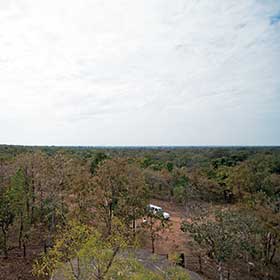THE GOTHANGAON COCOON Conservancy
Recognising that poor land and water management practices have resulted in a slew of failed and marginal
farmlands, and shrinking forests, the Sanctuary Nature Foundation pioneered the rewilding of aggregated
farmlands just south of Nagpur, on the periphery of the Umred-Karhandla-Paoni Wildlife Sanctuary in
Maharashtra.
This has been designed as a social upliftment programme in one of the world’s most farmer-stressed
geographies in a village called Gothangaon. Here in tiger country, with the help of Roheet Karoo,
Honorary Wildlife Warden and Praveen Pardeshi and M.S. Reddy, IFS, Government of Maharashtra we
guaranteed farmers a better life and livelihoods whose collateral benefit involved enhanced
biodiversity, reduced human-animal conflict and improved health and education for their children.
It has been five years now since nature has conspired to restore biodiversity to a 105-acre parcel of
farmland, which continues to be owned by the farmers and has already begun to support a bewildering
diversity of plant and animal life forms, including tigers. Sanctuary has now exited the Gothangaon
site, to kick-start Cocoon Conservancies across India. The revenue model for villagers involves
professionally run home stays, owned by the farmers and run by some of the best hospitality
professionals in the world. The Gothangaon COCOON Conservancy has already achieved biological, social
and financial proof of concept and is poised to act as a model project that is ready to be replicated
and scaled up in varying ecosystems across India.

















